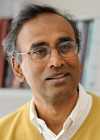(HOT) UPSC Current Affairs 2025 PDF
NEW! The Gist (NOV-2025) | E-BOOKS
(Event) Webchat with Dr. Ramakrishnan Venkatraman, Nobel Prize Winner 2009
The Embassy of the United States of America Office of Public Affairs invites you to participate in a WebChat with Dr. Ramakrishnan Venkatraman Nobel prize winner 2009
When: On November 24, 2009, at 5:00 p.m.
You may participate in two ways:
- To participate in the WebChat, please CLICK HERE
- You can visit the American Center at 24 Kasturba Gandhi Marg and log on to the computers that will be made available to you for the webchat
- If you have any questions regarding this webchat,
email us at
amcenternd@state.gov or
Call at 23472290
 About: Ramakrishnan Venkatraman may have
migrated to the US long back, but Indian-American Venkatraman Ramakrishnan made
a billion people back
About: Ramakrishnan Venkatraman may have
migrated to the US long back, but Indian-American Venkatraman Ramakrishnan made
a billion people back
During his stint at the varsity, Ramakrishnan conducted a research with Dr Mauricio Montal, a membrane biochemist and later designed his own 2-year transition from physics to biology. As a postdoctoral fellow at Yale University, he worked on a neutron-scattering map of the small ribosomal subunit of E Coli. He has been studying ribosome structure ever since. Ramakrishnan, now a senior scientist at the MRC Laboratory of Molecular Biology in Cambridge has authored several important papers in academic journals. In the August 26, 2000 issue of Nature, Ramakrishnan and his co-workers published the structure of the small ribosomal subunit of Thermus thermophilus, a heat-stable bacterium related to one found in the Yellowstone hot springs.
With this 5.5 Angstrom-resolution structure, Ramakrishnan's group identified key portions of the RNA and, using previously determined structures, positioned seven of the subunit's proteins. In the September 21, 2000 issue of Nature, Ramakrishnan published two papers. In the first of these, he presented the 3 Angstrom structure of the 30S ribosomal subunit. His second paper revealed the structures of the 30S subunit in complex with three antibiotics that target different regions of the subunit. In this paper, Ramakrishnan discussed the structural basis for the action of each of these drugs. After his postdoctoral fellowship, Ramakrishnan joined the staff of Brookhaven National Laboratory in ther US. There, he began his collaboration with Stephen White to clone the genes for several ribosomal proteins and determine their three-dimensional structures. He was also awarded a Guggenheim fellowship during his tenure there, and he used it to make the transition to X-ray crystallography.
Courtesy: American Embassy, New Delhi
